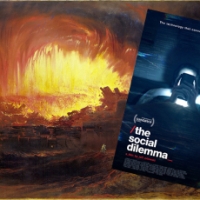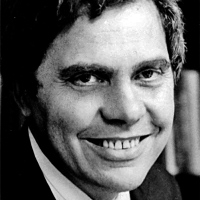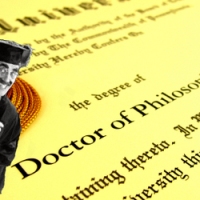The Whale and the CEO – a Review of “The Inventor Out for Blood in Silicon Valley”
If you knew where you were going
You would halt.
If you knew
What is planned for you
You would look around you.– Brecht
Few are the things about which most Americans agree, but it seems fair to guess that most Americans would admit that having bloodwork done is not among their favorite activities. After all, there is little that is enjoyable about having a tourniquet wrapped around your arm and having a venipuncture jabbed into one of your veins. You may feel as though you have been attacked by a vampire after having your blood sucked into a vacutainer, but after being drained of blood you’ll soon find yourself drained of funds (even if you have decent health insurance) once the bill from the testing company reaches you. All of which is to say, that if there was an alternative that promised to need only a pinprick of blood at a fraction of the cost – it would probably be appealing to many people. Granted, this “if” isn’t much of a hypothetical, as is proved by the case of Theranos.
It’s been a few years since Elizabeth Holmes, the founder and CEO of Theranos, graced the covers of Forbes, Fortune, and Inc. and in that time she has gone from being touted as “the next Steve Jobs” to being held up as a cautionary tale. Where once she spoke at prestigious summits and shook hands with high ranking government officials, Holmes is today locked in a legal battle after she was indicted by a grand jury on charges of fraud (in June 2018) for which she could spend 20 years in prison – though she pleaded not guilty. Theranos is no more. Had things gone differently, it’s easy to imagine a filmmaker putting together a documentary praising Holmes, but given how things turned out, Alex Gibney’s documentary The Inventor: Out for Blood in Silicon Valley is a cautionary tale. And though it aims to say many things about Holmes, it may ultimately say much more about our relationship to technology and Silicon Valley – even if it winds up saying much of that by omission.
The plot of the Theranos affair can be captured relatively simply: a biotech startup with ambitious goals lead by a charismatic figure managed to successfully con investors, journalists, and regulators until one committed journalist exposed the whole thing for the fraud that it was. Nevertheless, as the film reveals, there are other elements of the story worth digging into. Theranos was founded in 2003, when Holmes was 19 years old and studying at Stanford – though she would eventually drop out in order to focus all of her attention on the company. Driven by a desire to create “a world in which no one has to say goodbye too soon,” Holmes expressed a hope that easier blood testing would make it possible for people to be tested more frequently – thereby catching problems early enough for action to be taken. The idea was to gather pinpricks of blood from a fingertip into a “nanotainer” which could then be placed within Theranos’s technological triumph the “Edison” which could test the blood for hundreds of afflictions quickly. The Edison was little bigger than a computer printer, could be easily picked up by a single person, and promised to revolutionize medicine.
The problem, however, was that the Edison did not work.
Not that this caused Holmes to moderate her claims about her company. Indeed, Theranos forged ahead – raising money from investors (including the Walton family, Betsy DeVos, and Rupert Murdoch) and forming a partnership with Walgreens that sought to place Theranos testing centers in Walgreens’ stores. This was not just a matter of speculation, in Arizona these Theranos branches really opened, though the blood taken in them had to be shipped back to Theranos headquarters in Palo Alto – where the tests largely weren’t run on Edison, and where the results were often of dubious veracity. Furthermore, rather quickly Theranos stopped gathering blood by pinprick and had to go back to venipuncture.
Internal problems at the company were also growing – the scientists and engineers were aware that Edison didn’t work – but Holmes was still seen as a visionary, the company was still valued in the billions, and the company’s board was filled with prominent figures including former secretaries of state. And when employees left, non-disclosure agreements and high-priced lawyers were there to ensure their silence – extending the paranoia that had defined working for the company into the lives of former employees. The major turning point for Theranos is almost certainly when Wall Street Journal reporter John Carreyrou published a piece (in October 2015) revealing many of the misleading claims made by Theranos. Spurred by Carreyrou other journalists who had previously praised Theranos began reassessing the story Holmes had told, even as government regulatory agencies (spurred in part by a whistleblower) began fully investigating Theranos. And thus Theranos’s tale ends with a deluge of lawsuits, with all of the impressive people who had been eager to be near the company deserting it, and with Holmes (as well as the company’s president and COO Ramesh “Sunny” Balwani) facing criminal charges.
Theranos was doing highly questionable things, it is good that it was exposed – but Theranos is the symptom, not the disease. And The Inventor wants to assure its viewers that everything is fine because the symptom has been soothed, but the disease continues to spread.
Theranos, at least in the minds of many of its supporters, was going to change the world. It didn’t. And, unfortunately, there is little real reason to believe that even its colossal failure will lead to much change. Gibney’s documentary is an engaging and worthwhile watch, and though it never falls to the level of simple schadenfreude, it does not manage to rise to the level of serious social commentary either. Certainly, Holmes is not treated as a hero, and it is not necessarily the case that she needs to be treated as a villain, but the film cannot quite bring itself to treat the tale of Theranos as a broader story of a societal willingness to place too much hope and trust in brilliant Silicon Valley CEOs and their fantastical claims. After all, Elizabeth Holmes is hardly the only tech company CEO seen as a potential savior. Society is filled with complex issues, but it is easier to imagine that a well-meaning CEO will come along with a magic device and fix everything than it is to imagine elected officials actually getting something done. And it may well be that no one in the film buys more fully into the idea of the brilliant CEO than Holmes herself.
Thus, part of what makes The Inventor worthwhile, and makes Holmes’s tale noteworthy, is that it is hard to not want Theranos to succeed. Easier blood testing, quicker results, lower prices – who wouldn’t want such things? Even as the film shows everything falling apart, and lies being built upon lies, it is hard not to want to root for Theranos a little bit. Not because Holmes seems like a particularly altruistic person – she seems more interested in being the next Steve Jobs than in improving health care – but because it really would be great if going in for a blood test was less intensive and less expensive. This is part of what separates The Inventor from the recent documentaries about the Fyre Fest fiasco. In the Fyre documentaries the viewer is just waiting for the cigar-chomping Billy McFarland (the CEO of Fyre) to get his comeuppance, but for all her unblinking lying The Inventor never truly vilifies Holmes. Of course, the nasty thrill of the Fyre documentaries was in getting to watch a bunch of self-important influencers getting duped, but it’s hard to feel the same derision for the people in Arizona who went into a Walgreens to get their blood tested by Theranos. The pleasure of the Fyre documentaries is in watching rich kids get “what they deserve,” the displeasure of The Inventor is that it’s a reminder that regular people still can’t get the medical attention they deserve.
And yet, The Inventor is not an indictment of health care in the United States. The film doesn’t argue that what is needed is a shift away from for-profit health care. The tragedy in this film is that Holmes failed, not that millions of people cannot afford to get blood work done. It may seem that those two things are one in the same, but they are not. Holmes’s tragedy is a lamentation for the failed inventor, a figure who idolized Steve Jobs, and completely bought into the myth that she was selling. And to be clear, it was a myth that the business press and many prominent “very serious people” were also eager to eat up. The sad thing, at least in this film’s telling, is not how much you have to pay for blood work, it’s that Holmes isn’t going to be on the cover of Fortune again.
This is a film that doesn’t really have any villains – no one in the film really questions Holmes’s earnestness. And though Holmes may be deluded, and completely committed to the lie, she appears to be the victim of the story that popular culture tells about technology – it is a story she spins, but she is not the originator of the story. Part of what keeps her from appearing as the villain is that the film doesn’t really have any heroes either – Carreyrou seems like a journalist who stumbled upon a great story, not a dogged defender of the people; and the whistleblowers are framed (rather unfairly) in a somewhat opportunistic light. The message of The Inventor is that we wanted Holmes and Theranos to succeed, that we trusted her, and that now we are very disappointed. Therefore, she (and those who were complicit like Balwani) must be punished, that way we can go back to thinking that even if Elizabeth Holmes won’t save us that Elon Musk will save us. And lest this framing appear unfair, it should be noted that as the film discusses Holmes’s failure it shows images from Musk’s Space X to reinforce the view that Holmes was just a bad egg, and that Silicon Valley remains flush with actual saviors.
The Inventor never comes out and says this, in fact it does the opposite, but if you’re going to take one thing away from the film it’s that you should be very skeptical of Silicon Valley’s claims. The story of Theranos isn’t used as a way of deconstructing the popular myths about Silicon Valley, rather Holmes is presented as the exception that proves the rule. And you should be aware of the fact that many of those whose job it is to know better, easily fall for (and help disseminate) these same myths.
One of the things that the film returns to at several junctures is two words from the profile of Holmes that Ken Auletta wrote in The New Yorker in 2014. After pressing Holmes repeatedly for an explanation of how the Edison actually worked, something which Holmes resisted providing as she didn’t want to risk revealing the machine’s inner workings to competitors, Holmes eventually provided a description which Auletta describes as “comically vague.” Holmes’s explanation of the Edison’s functioning is loaded with gibberish, but contains just enough scientific and technical terminology as to sound meaningful. Yet, what it ultimately relies on is the reader’s willingness to believe Holmes. But frankly, the problem is not that Holmes’s explanation was “comically vague” – but that it was bullshit. And the bigger problem is that practically no one in the film – not the board, not the lawyers, not the journalists, not the scientists working for Theranos – was willing to simply call bullshit. The notable exception is Professor Phyllis Gardner, who advised Holmes for some of the time when Holmes was at Stanford, and seems to be one of the only people willing to ever tell Holmes that something would not work. Furthermore, anyone who dared to cast a skeptical gaze towards Theranos in its heyday was almost certainly derided as a technophobe, a Luddite, or as wanting everyone to go back to living in caves. After all, Holmes was on the cover of Fortune! She met with President Obama and Vice President Biden! General Mattis and Henry Kissinger were on Theranos’s board of directors! How can you not question the emperor’s beautiful new robes?
Of course, this isn’t just a problem about Theranos. It’s a problem about Silicon Valley in general, and more broadly about our relationship to Silicon Valley.
How is it that Facebook seems to survive every single scandal, even as it becomes the case that the only types of stories we hear about Facebook are scandals? Why is it that Amazon can convince cities to fight tooth and nail for the honor of bribing the company into coming to them? How come most people shrug at every new revelation of Google’s expanding surveillance capitalist apparatus? And why do we accept it as standard business procedure when Apple keeps decreasing the lifespan of our devices? At risk of being overly simplistic, because we refuse to call bullshit on these companies. Cleary, there is a distinction with Theranos insofar as its technology was never really up and running. However, many of the claims from these companies are similarly fallacious – such as all of the claims about the work being performed by AI that turn out to really be reliant on low-paid labor in distant countries. Or, consider how a few years ago the tech press promised that self-driving cars were right around the corner…but now those same sites grudgingly admit that they bought the spin. The problem is the desire to believe the claims that the CEOs of these companies make, to invest trust in them regardless of whether or not they’ve earned it, to keep on believing them even after they’ve proved to be liars, and to pass these beliefs on to the next CEO that comes along.
Yes, Holmes is facing the consequences of her actions – but when will Mark Zuckerberg face the consequences of his actions?
At one point in the film one of the rank and file Theranos employees comments “the notion in Silicon Valley is, like, ‘move fast and break things,’ but that’s really dangerous when people’s lives are in the balance.” It’s a fair point, but the problem is that it acts like this is somehow what separates Theranos from the other tech companies, when the truth is that the problem is that people’s live are always in the balance. When social media is used to incite genocide – lives are in the balance. When the employees in an Amazon warehouse are struggling to earn a living wage – lives are in the balance. When facial recognition software threatens to turn the world into an episode of Black Mirror – lives are in the balance. When planned obsolescence means that those who live downriver from e-waste dumps are put at risk – lives are in the balance. This list could go on, but the point remains the same: the technological decisions in our society put us (and others) at risk and expose us to hazards – often without us even realizing it. And the fact that Theranos was shut down doesn’t mean that society is any safer from the hubristic whims of Silicon Valley CEOs.
Throughout the film, Holmes says many curious things, but one of the oddest is something she says in an interview with the filmmaker Errol Morris. Reflecting on her youth, Holmes says, “I got into Moby Dick and The Iliad and The Odyssey at a pretty young age. Understanding how great people, and great leaders, led groups of people. So much changes in our society technologically but as humans we don’t change a lot.” What’s interesting about this line is that even a passing familiarity with those works leads one to question the extent to which they are portraits of “great leaders.” True, Odysseus eventually makes his way back to Ithaca – but his entire crew is killed on the journey. And none but Ishmael survive Captain Ahab’s mad pursuit of the titular whale.
There is something fitting, if ironic, about Holmes’s comment on Moby Dick – as that book has been held up by many thinkers and social critics as capturing the essence of our world. As C.L.R. James put it: “Melville is not only the representative writer of industrial civilization. He is the only one there is” (89). And though some may quibble that we have moved from “industrial civilization” into “technological” or “computer dominated” or “risk” civilization – the way in which Moby Dick captures how “nature, technology, the community of men, science and knowledge, literature and ideas are fused into a new humanism, opening a vast expansion of human capacity and human achievement” (89) – still feels apt. After all, what is the tale of Theranos if not one of technology and science being seized in an attempt to open “a vast expansion of human capacity and human achievement”? Or, as Holmes put it “So much changes in our society technologically but as humans we don’t change a lot.” And yet, Moby Dick is not a tale of triumph. As James observed “Ahab will lead the vessel to inevitable destruction and those whose responsibility it is to defend the society will be completely incapable of doing so” (53).
And if Theranos is to be the Pequod, that makes Elizabeth Holmes its Ahab. And just as Ahab’s crew was unwilling to make him see that his quest was leading them to their doom, much the same can be said of those surrounding Holmes. Starbuck never brings himself to call bullshit on Ahab, and none of Theranos’s employees seem willing to do the same for Holmes – until, that it, it was already too late.
Reflecting on the cataclysmic end of Moby Dick, James explains “the ship goes down and drags the boat and all the crew with it…It is to this crisis that they have been heading ever since they started on the quest” (61).
There is a certain doomed quality about Elizabeth Holmes in The Inventor, and in watching the film it can be tempting to view her as Ahab with the Edison being the whale that she simply cannot stop chasing. And given how clear it was, from early on, that the Edison would not work, it is hard not see Theranos’s collapse as the “crisis” towards which Theranos was heading from the start. And yet, it would be foolish to treat The Inventor as merely being a story about Theranos. Rather, this is a cautionary tale about our infatuation with Silicon Valley, about our desire to believe that a new technology that is never explained will solve all of our problems, and about our willingness to believe the claims of a CEO just because they’re wearing a black turtleneck. It is obvious that Elizabeth Holmes misled people, but she could not have gotten nearly as far as she did if so many people hadn’t been willing to be misled. And ostensibly many of those people, whether they realize it or not, will be watching The Inventor.
Theranos may well have sunk. But every day there are fresh ships that embark from many ports in pursuit of their own white whales. And though we may tell ourselves that we are but watching from the shore, many of us are still blithely following these Ahabs.
Works Cited
James, C.L.R. Mariners, Renegades, and Castaways: The Story of Herman Melville and the World We Live In. Hanover: Dartmouth College Press, 1953.
Related Content
The Technology Giants Never Deserved Our Trust
An Island of Reason in the Cyberstream
Living Well int he Technosocial World











Pingback: “Cover Your Tracks!” – A Critique of the Privacy Project from The New York Times’ | LibrarianShipwreck